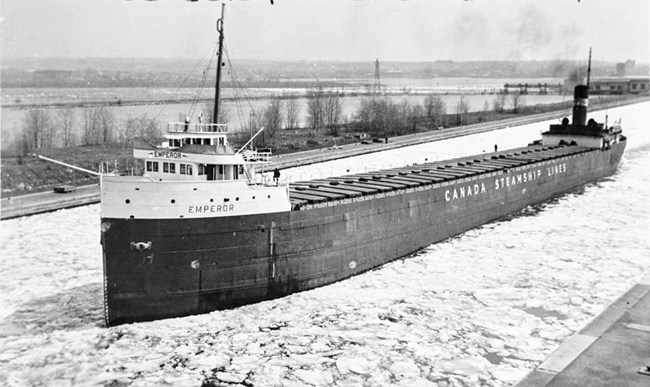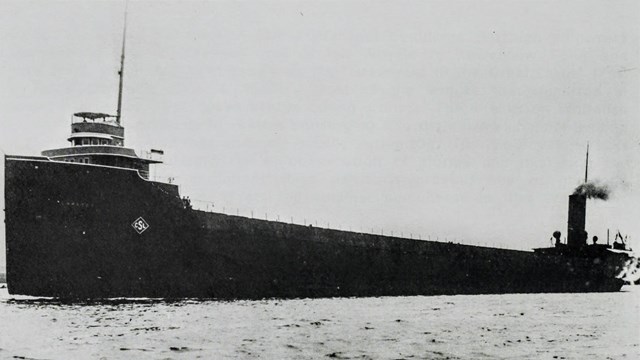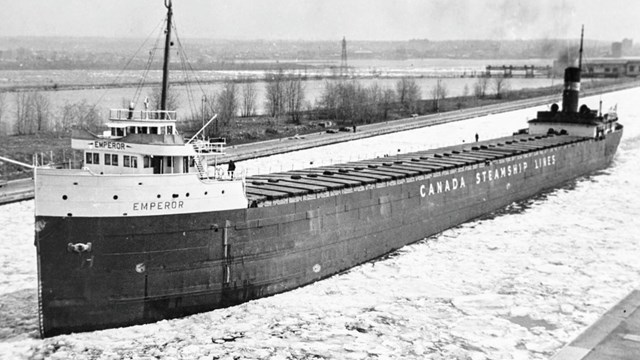
Great Lakes Maritime Collection, Alpena County George N. Fletcher Public Library, 218616_218626_F IntroductionNewspaper stories at the time of Emperor's loss compared the high shipwreck concentration at the northeastern end of Isle Royale to Keweenaw Point and Whitefish Point, which had been known as the "Graveyard of the Great Lakes" (Port Arthur News Chronicle, June 4, 1947). Most of the wrecks that occurred at Keweenaw Point were ships driven ashore during storms. The wrecks on Whitefish Point have been due primarily to vessels converging into the narrow channel leading out of the Upper Lake, and then colliding, usually during fog. The Isle Royale wrecks have been principally attributed to a "combination of storms and mistaking the travel routes, the latter, in former days particularly, being due to magnetic disturbances which sometimes affect the steamer compasses in that area" (Port Arthur News Chronicle, June 4, 1947). The Story of the SS Emperor
Construction
Origin and Original Dimensions 
Operational History
Years of Service 
Wreck Event
Incident and Survivor Accounts Shipwreck SiteThe wreck is basically intact, with the bow area showing most damage. Stern area features an intact mast rudder/prop, engine room, and numerous cabins. Buoy on bow attached at stern in 25 feet; buoy on stern attached on deck at 100 feet. Map of Emperor Site SS EMPEROR Site Map Quick Facts
|
Last updated: November 24, 2020
